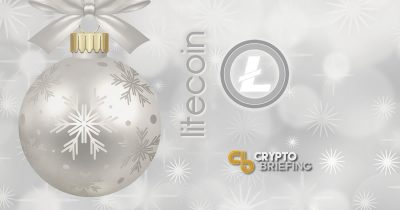What Is Litecoin? Introduction To LTC

Share this article
What Is Litecoin?
Litecoin is a blockchain-based cryptocurrency created by Charlie Lee in 2011. It’s technically similar to Bitcoin – in fact, it’s essentially a fork. It does have differences, though, including processing blocks every 2.5 minutes (4x faster than bitcoin) and its algorithm is harder to solve. This makes Litecoin harder to mine but easier to spend.
Introduction To Litecoin
It’s not only faster transactions either; Litecoin is already speeding ahead of Bitcoin in a lot of key partnerships, including onboarding the long-awaited Lightning network. Litecoin is an OG altcoin with a lot of successful partnerships and high trading volume, but it’s not all roses and rainbows.
Litecoin’s creator Lee caught flack for dumping his LTC stash. LitePay, a supposed LTC-powered payment card the Litecoin Foundation created with TenX ran out of funding and fizzled. And, despite its advantages over Bitcoin, its price seems forever linked to its competitor. Can Litecoin win in the crypto market, much less the mainstream?
To find out, let’s start by analyzing LTC, Litecoin’s proprietary cryptocurrency coin on the market.
Litecoin LTC’s Crypto Market Performance
Litecoin has a total supply of 84,000,000 LTC. Its peak price so far was $372.22 on December 18, 2017.
Like Bitcoin, Litecoin is mined using a Proof of Work algorithm and Scrypt hash function adapted from Tenebrix. It took a little longer for ASIC mining rigs to flood Litecoin’s network, but it did inevitably happen with Bitmain’s Antminer L3+ and more. LTC mining pools are also popular, since FPGA and ASIC Scrypt miners are more expensive to produce and are therefore sold for higher prices.
The amount of LTC awarded per block is 25 LTC until October 2019, when it cuts in half. This halving occurs once every four years until all LTC is mined.
Aside from the Litecoin core wallet, Litecoin is well supported in third-party wallets. Trezor, Exodus, Jaxx, and LoafWallet are just a few wallets that support LTC.
LTC is widely accepted on crypto markets, including DOBI trade, OKEx, BitForex, Binance, Coinbase, Huobi, Bitfinex, HitBTC, and many more. Its typically paired with BTC, although you can also trade it for USDT and ETH, as well as fiat currencies like USD.
Although mining LTC can be a pain, buying, selling, and hodling are not. LTC is often referred to as the silver to BTC’s gold, and that’s because of its utility for value transfers more than anything else.
Litecoin Is a Lighter Way to Crypto
Litecoin’s P2P network was released under MIT/X11 licenses and is considered open-sourced. It’s technically similar to Bitcoin but with a few tweaks for speed, including faster processing times (2.5 minutes vs 10) and smaller transactions. In fact, Litecoin’s transactions are approximately 1/50th the size of Bitcoin’s.
The Scrypt algorithm differs somewhat from the SHA-256 algorithm used by Bitcoin, making it more resource-intensive to mine. In 2017, Litecoin was upgraded with Segregated Witness (SegWit), which sped things up a bit.
Litecoin is a pure cryptocurrency like Bitcoin in that its purpose is to be used as a digital currency, not host smart contract dApps. It has a limited supply and immutable transactions, as the entire blockchain is processed by every node on the network.
This means Litecoin is not on the level of Blockchain 2.0 projects like Ethereum or NEO. But that was never the point – the point was to create a leaner, meaner Bitcoin, and even in that aspect, Litecoin has challengers like Nano.
Nano is faster than Litecoin, but that comes at the price of mutability and security. Nano is a mesh network, so the ledger is more distributed than decentralized. Double spends and other forms of financial fraud are much more difficult to accomplish on Litecoin.
Overall, Litecoin accomplishes its mission of being a lighter cryptocurrency than Bitcoin. The real question is whether the market cares.
Litecoin Is Not the Only Altcoin
There are over 1600 altcoins at this point, and while Litecoin does function better than Bitcoin, profitability questions surrounding mining and a slew of competition threaten it at every corner. We now have flavors of crypto for every palette, including utility coins like IOTA, anonymity coins like ZEC, blockchain platforms like Ethereum, specialty coins like Dentacoin, and more.
Litecoin resolved a problem with Bitcoin, sure. But so did thousands of others. Charlie Lee focusing on a rivalry between Litecoin and Bitcoin Cash is somewhat like watching two jobbers feuding over the Intercontinental Title in the WWE. Sure, it’s entertaining, but it’s certainly not the main event.
Forks of Litecoin like Litecoin Cash are struggling even more to gain market acceptance as they carry the double whammy of being altcoins and forks.
Also, being faster than Bitcoin is no longer the measuring bar in crypto. A pure financial crypto must be at least as fast as Visa, which Litecoin is not.
As the years go by, one must wonder whether Litecoin will retain a market cap above Dogecoin. It has an active community that fervently supports it, and we can only hope that continues into the future. Litecoin is an OG that deserves recognition for making a better Bitcoin.
Litecoin Introduction: Summary
Litecoin is one of the first altcoins, arriving on the scene in late 2011 and developed by a former Google engineer. It’s similar to Bitcoin, except it’s faster and lighter. Here’s why.
- Litecoin is a PoW coin like Bitcoin, but it’s mined using a modified SHA-256 algorithm called Scrypt. This makes it harder to mine, although transactions are processed four times faster than Bitcoin.
- Litecoin is widely accepted as cryptocurrency and is easily exchangeable into fiat currency.
- Litecoin has strong community support and was the first crypto to implement both SegWit and Lightning.
With these pieces in place, Litecoin is sure to remain a solid competitor in the crypto space for a long time to come. I just hope it gets accepted by more retail partners in the future.
